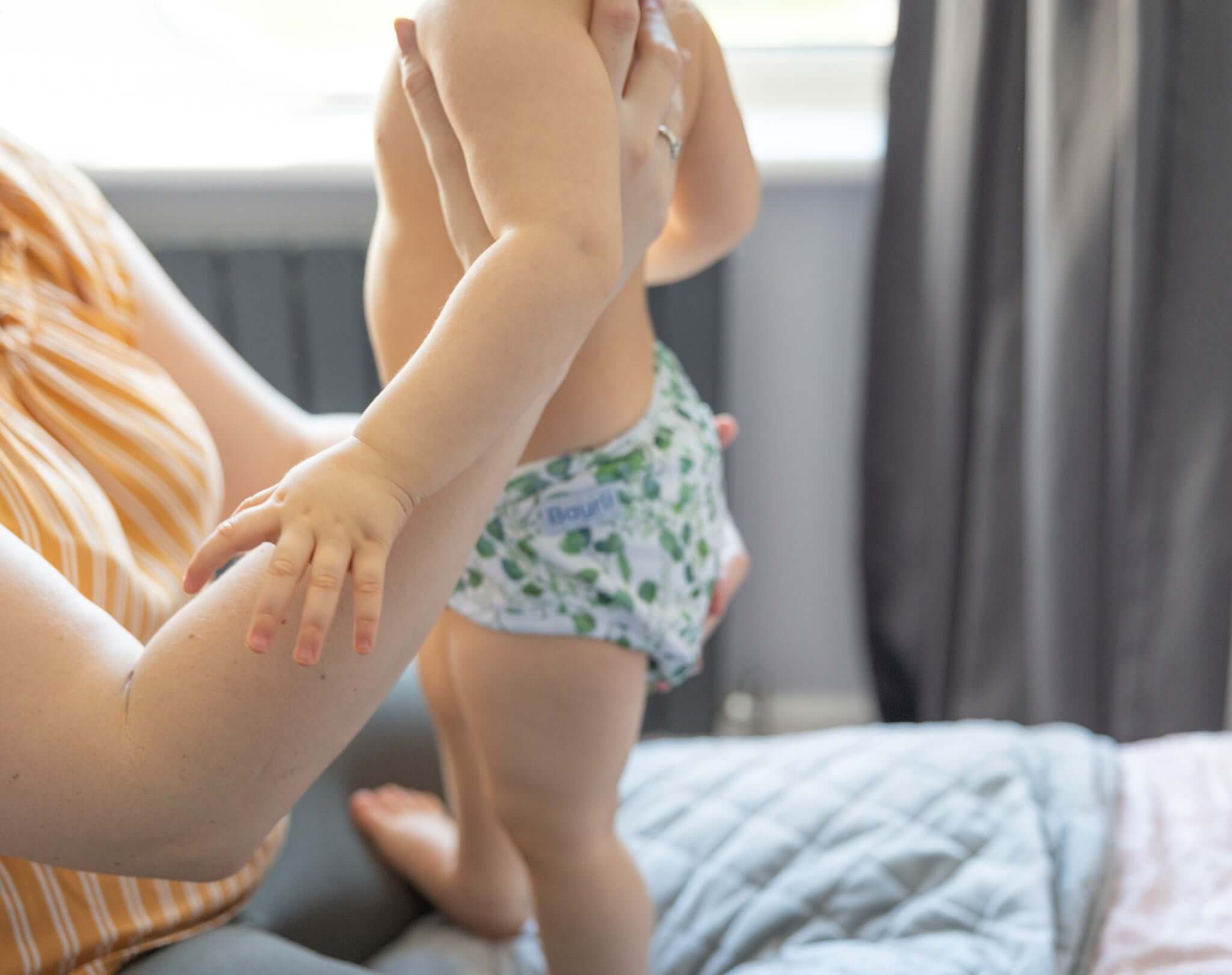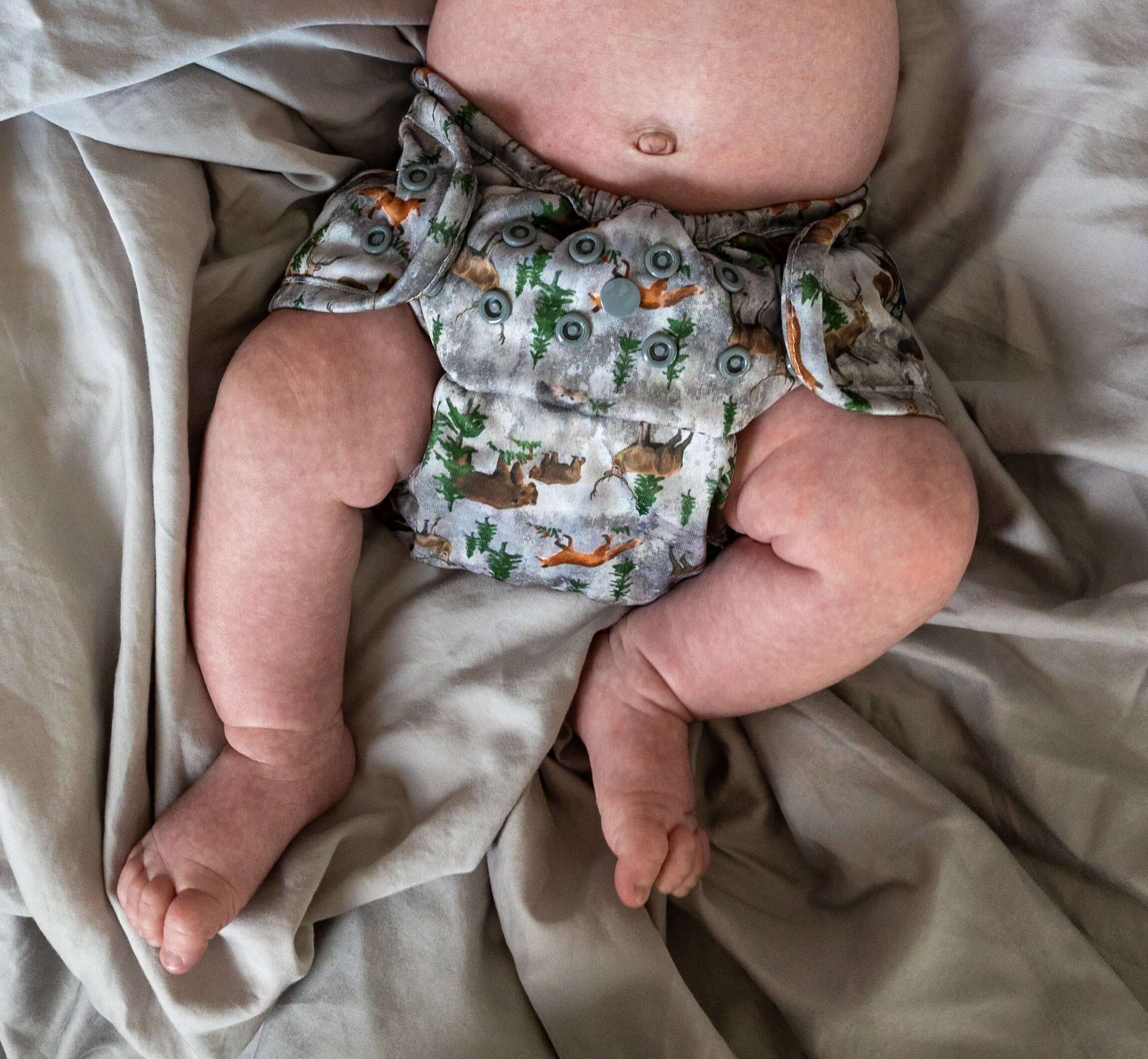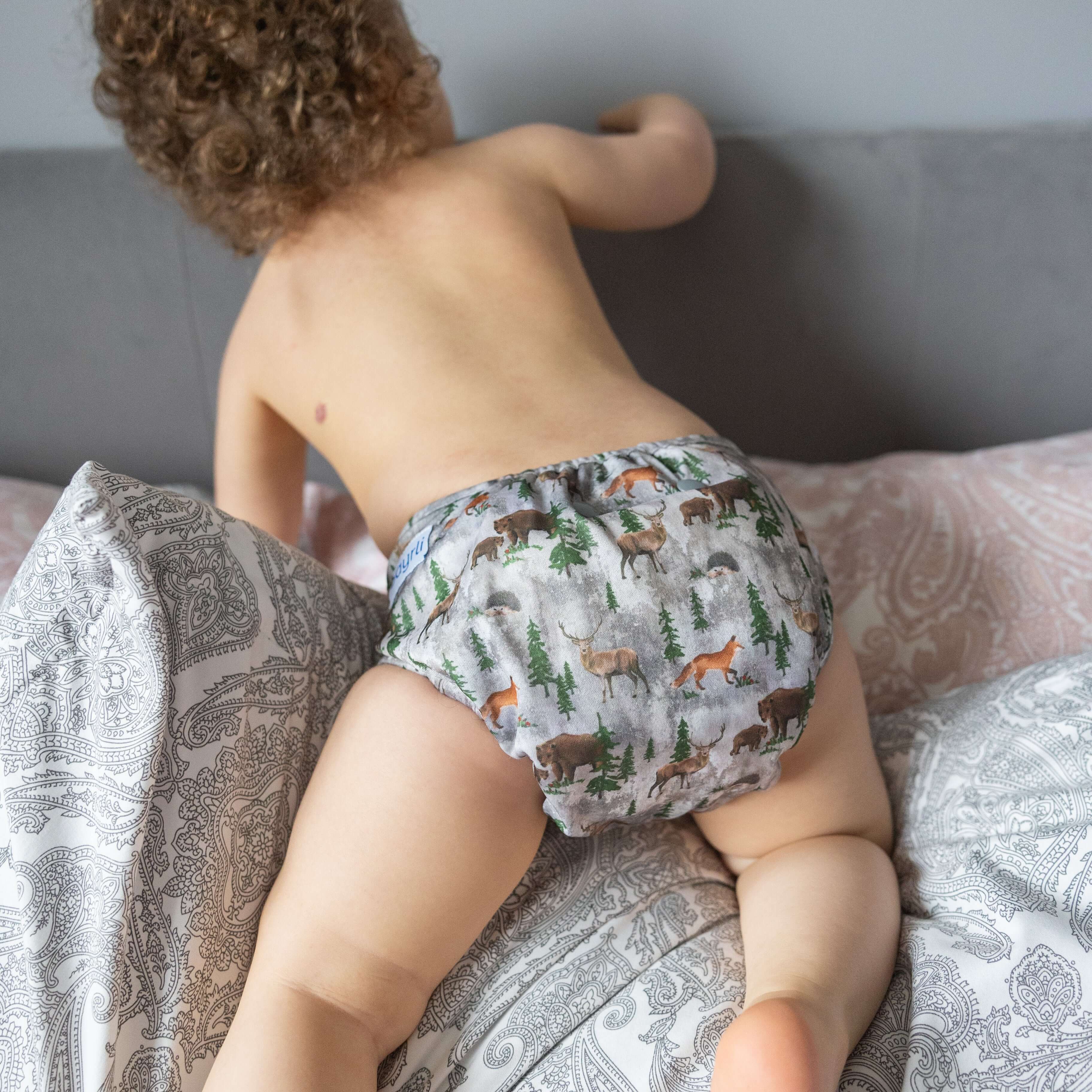
15 Essential Tips for using Cloth Diapers
We’re a brand devoted to reducing waste, offsetting our impact, promoting natural materials, and intelligent design. With a focus on cloth diapers, we don’t need to tell you why we love them and why you should try them.
But if you do want to dive head first into the world of eco-reusables and quality diapering systems, we want to give you our top tips for doing so and achieving success.
1. 30-36 Cloth diapers should be sufficient for you
How many diapers you need is entirely up to you, and only you will know this, but as a general rule of thumb, it’s best to have 30-36. If you’re investing in a newborn stash, you may choose to lean on the side of 36, as your baby could go through 12 diapers in one day alone. As they grow older, fewer diapers will be needed each day. And don’t forget to invest in a kit or bundle where you’ll net yourself a nice saving too. If you need more, and many parents need up to 48, you can add them to your stash whenever you need to!
2. Go the whole way and choose cloth wipes
You’re already using cloth diapers and you’re proud of yourself for doing your part for the environment, not to mention saving yourself money in the process. But why not do the same for your wipes too? Cloth wipes are the easiest switch of all. Simply throw them in the wash with your dirty diapers and reuse them over and over again. With the Bayrli lifetime warranty you need never worry. 1-2 cloth wipes does the job of 6+ disposable wipes.
3. Save money and make your own wipe solution
Cloth wipes are best when wet, and all you need is plain water, scented water, or to be kind to your baby's behind, simply add some coconut oil to the water.
You can wet your wipes in the sink before each change or you could keep a small spray bottle at your changing table for easy access. Many parents keep their damp cloth wipes in a small tub or in tupperware, and grab as needed.
4. Choose a brand that looks out for you
Choosing reusable diapers full time can cost anywhere from $200 to $750, and while this is still a monumental saving over disposable diapers, it is important to consider what you buy. Research your chosen brands and styles. Look at what they stand for, what causes they support, who they are, and what return and warranty policies they offer. It is unfortunately a sad truth that many brands simply imitate each other and copy without laying the groundwork, and as an informed consumer, ensure you keep an eye out for this. Remember, you always get exactly what you paid for.
5. Choose different styles to see what works best
Now that you’ve considered your purchase and what brand you want to support, we encourage you to try different styles of diapers and different styles of absorbency. Try All-in-Ones and Pocket diapers, and pair them with hemp inserts and bamboo inserts. You’ll quickly know what’s best for your baby, and what’s best for your given circumstance, be it nighttime or a quick trip to the grocery shops or local farmers market.
6. Store your dirty diapers in a hanging wet bag
Always think of yourself and consider the easiest washing routine. Open your diapers, throw them into your large wet bag, and you’re done until laundry day. When laundry day comes, you can easily flip your wet bag inside out to throw your dirty diapers in the wash without you even having to touch them.
7. Issues with leaks? Boost absorbency and choose the right materials
All diapers will leak. And you will be frustrated when it happens and will be determined to prevent this from occurring again. Regardless of brand, it is one the most prominent concerns that parents have when they use reusable diapers. However, there are a few common causes as to why leaks occur and some simple solutions to prevent your cloth diapers from leaking. Our full guide is here for you.
8. Using a diaper cream? Make sure it’s cloth friendly
Not all diaper creams are safe for cloth (in fact most aren’t), and many that are marketed as being cloth friendly are not as there is no federal testing or requirement for this. Many can cause repelling and staining. Zinc is something to stay away from in cloth diaper creams as it will heavily stain your diapers. Make sure to familiarize yourself with the key facts to look for in order to choose the right one for your reusable diapers and your baby. And don’t forget the natural options. Something as simple as coconut oil or aloe vera can work wonders. If you need to use a diaper cream, using a reusable liner will help prevent these issues.
9. Choose your detergent wisely
This is such a contentious topic, and many cloth diaper parents will swears by one brand over another. Truth be told, the whole wash routine is essential and should be looked at rather than just your detergent. Aspects such as temperature and water hardness certainly play a role as this affects how much detergent you will need to use.
Many detergents can cause repelling issues, absorbency headaches, ammonia buildup, and even chemical burns. And homemade soap just doesn’t do the trick when it comes to cleaning so best avoid these right out of the gate.
10. Make sure you change the diaper at least every 4 hours
We strongly advise that you change your baby’s diaper at least every four hours during the day. Our diapers are designed to hold this much urine and poo, but going beyond this may cause problems. And during the night, we encourage you to change your baby’s diaper every time they wake up at night during the newborn stage in order to keep track of wet and dirty diapers. However, as your baby grows older, you can let them go longer, even the whole night, without a diaper change. Our Bayrli Inners and Bayrli Terry Diapers are designed for just this. You just have to find the right routine for you and your little one.
11. Stick to your wash routine
Using cloth diapers should not be a burden or stressful. You can build a routine in just 1 week. A little bit of planning is all it takes.
The three main elements are washing, drying, and prepping.
Washing your diapers is incredibly straightforward, but how often you do it depends on how you store them. Drying cloth diapers is the most time consuming, but nearly all brands encourage tumble dryer use on a low setting. We do too! Save even more money by line drying them if you can. Once dried, stuff and store and you’re good to go.
12. What do I do with the poo?
When your baby dirties in their diaper you should change them as soon as possible. If your baby is exclusively breast fed, their poo is water soluble and you do not need to rinse the diapers. You may simply put these dirty diapers in your diaper pail until wash day. If your baby is on formula or has started solid foods, you will need to remove as much poo before storing the diapers or washing them. You may utilise a diaper sprayer or hang the diaper into the toilet and try to flush most of the poo off. Reusable diaper liners are a great addition to any diaper and can make clean up much easier.
13. Always check the fit
Be sure to check your fit with each diaper change to avoid leaks and blowouts. It takes just a second, and saves a lot of headache. Make sure there are no gaps at the legs, your rise is on the right setting for your baby, and the diaper is not on too tight. Pink 'sock' marks are completely normal with cloth, but red marks can be a concern. If you’re unsure how your cloth diaper should fit your baby, you can find our full guide here.
14. Consider investing in a diaper sprayer
We’re talking $15-$25 here, not something incredibly fancy. A diaper sprayer isn’t a necessity, and most people never use one, but once you have it, you can’t live without it. Outside of cloth wipes and a good storage/travel bag, it is the best investment you can make when using reusable diapers.
15. It is not all or nothing
We are here for you and your baby if you have any questions for us. This is your decision and your journey. Remember, every single diaper change with a cloth diaper is one less disposable diaper in a landfill or an incinerator, and that is undoubtedly a positive step for the environment and for your pocket. This need not be a daunting undertaking.
You don’t have to use cloth for every diaper change.
You don’t have to use them overnight on your baby.
You don’t need to buy multiple brands.
Don’t be discouraged by leaks with your baby.
Talk to your local diaper library.


